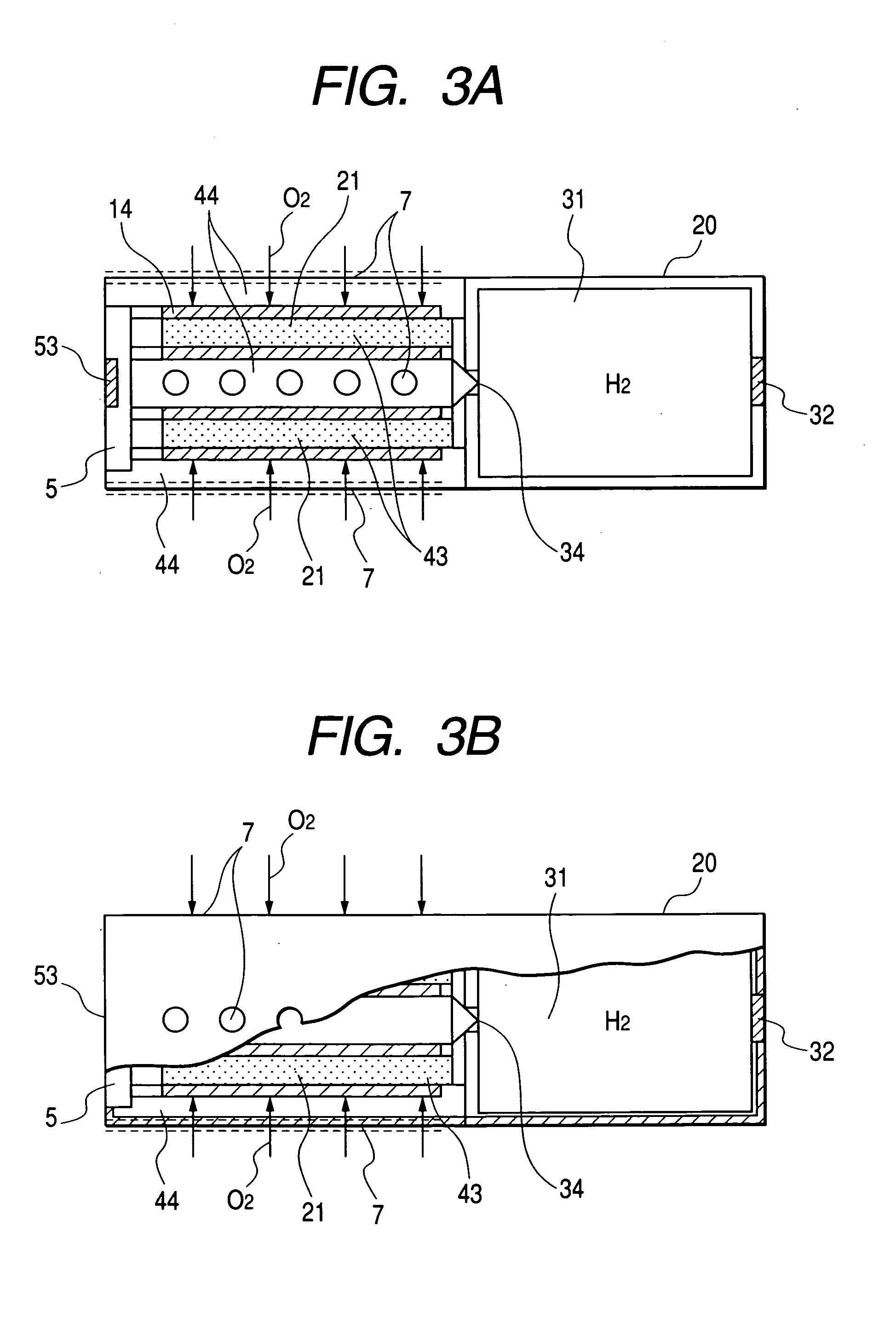Fuel cell and electric apparatus
a technology of fuel cell and electric equipment, applied in the direction of fuel cells, regenerative fuel cells, cell components, etc., can solve the problems of increasing power consumption, difficult to obtain a primary battery that can supply sufficient energy, and difficult to use a secondary battery at once anytime and anywher
- Summary
- Abstract
- Description
- Claims
- Application Information
AI Technical Summary
Benefits of technology
Problems solved by technology
Method used
Image
Examples
example 1
[0087] A first aspect according to the present invention will be explained in detail while referring to the drawings.
[0088]FIG. 1 is a perspective view illustrating a fuel cell system according to Example 1 of the present invention; FIG. 2A is a plan view of a fuel cell system of FIG. 1; FIG. 2B is a partial cross-sectional plan view of the fuel cell system of FIG. 1; FIG. 3A is a front view of the fuel cell system of FIG. 1; FIG. 3B is a partial cross-sectional front view of the fuel cell system of FIG. 1; FIG. 4 is a left side view of the fuel cell system of FIG. 1; and FIG. 5 is a schematic view showing a structure of the fuel cell system according to the present invention. FIGS. 1, 2A, 3A and 4 illustrate the interior of the fuel cell system as it might be seen through a transparent casing 20.
[0089] Giving one example of the external dimensions of a fuel cell system according to the present invention illustrated in FIG. 1, the length (a) is 30 mm, the width (b) is 50 mm and th...
example 2
[0111] The second aspect of the present invention will be explained in detail while referring to the drawings. Example 2 is a fuel cell system that comprises a cell unit having a water-moving pattern (water-moving means) provided on a surface of an oxidizer electrode, and is of a configuration such that no humidification water passage is provided. Example 2 is the same as Example 1 with the exception that no humidification water passage is provided. FIG. 1 is a perspective view illustrating a fuel cell system in accordance with Example 2 of the present invention. FIG. 2 is plan views of the fuel cell system of FIG. 1. FIG. 3 is front views of the fuel cell system of FIG. 1. FIG. 4 is a left side view of the fuel cell system of FIG. 1. FIG. 5 is a schematic view showing a structure of a fuel cell system according to the present invention.
[0112] Giving one example of the external dimensions of a fuel cell system according to the present example illustrated in FIG. 1, the length (a) i...
PUM
| Property | Measurement | Unit |
|---|---|---|
| height | aaaaa | aaaaa |
| width | aaaaa | aaaaa |
| length | aaaaa | aaaaa |
Abstract
Description
Claims
Application Information
 Login to View More
Login to View More - R&D
- Intellectual Property
- Life Sciences
- Materials
- Tech Scout
- Unparalleled Data Quality
- Higher Quality Content
- 60% Fewer Hallucinations
Browse by: Latest US Patents, China's latest patents, Technical Efficacy Thesaurus, Application Domain, Technology Topic, Popular Technical Reports.
© 2025 PatSnap. All rights reserved.Legal|Privacy policy|Modern Slavery Act Transparency Statement|Sitemap|About US| Contact US: help@patsnap.com



